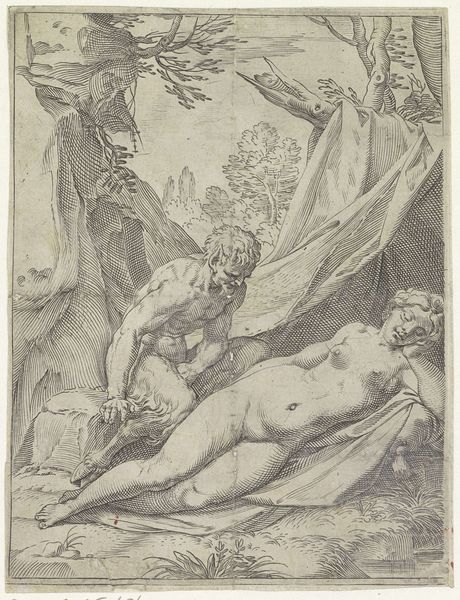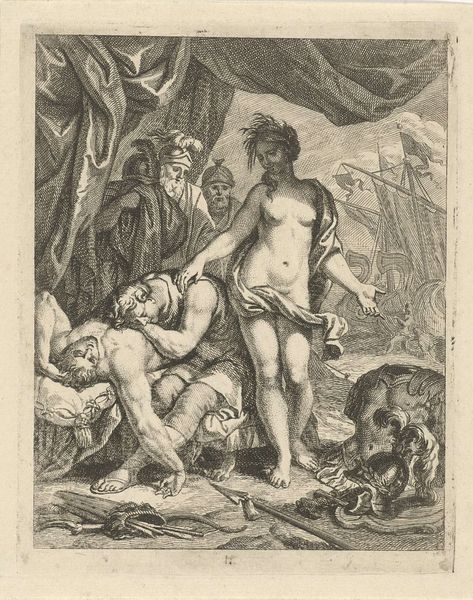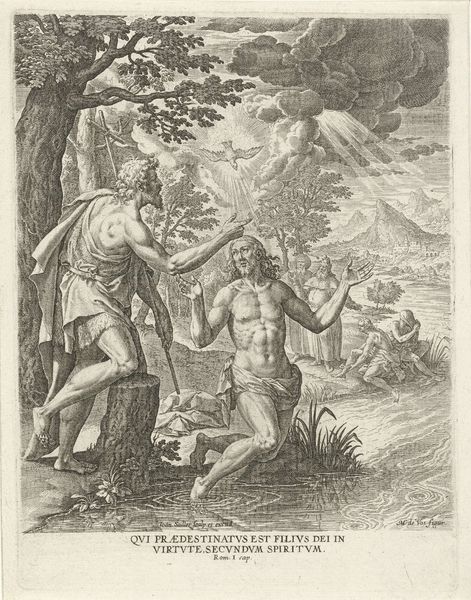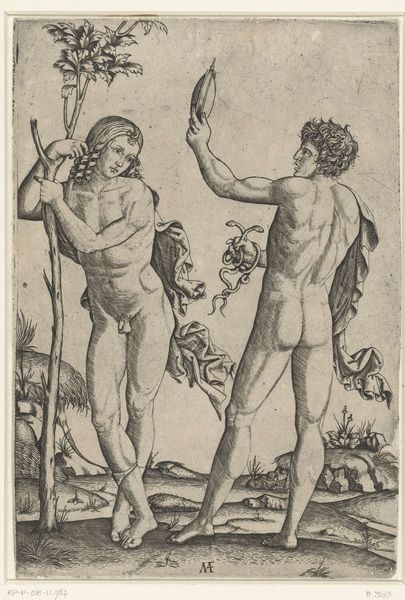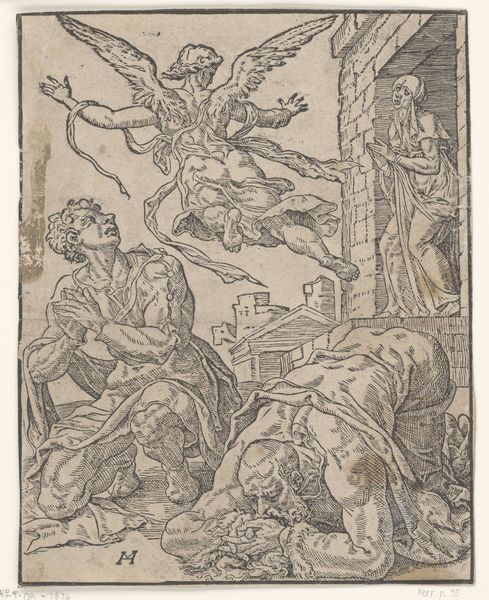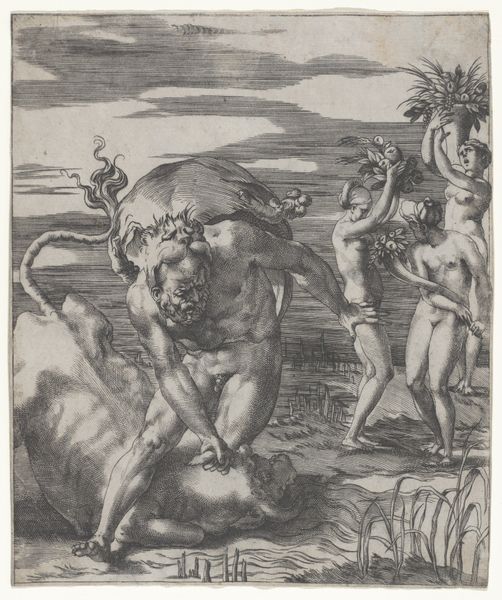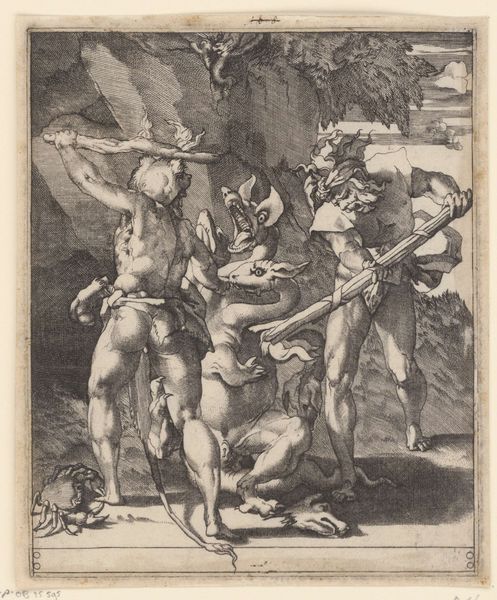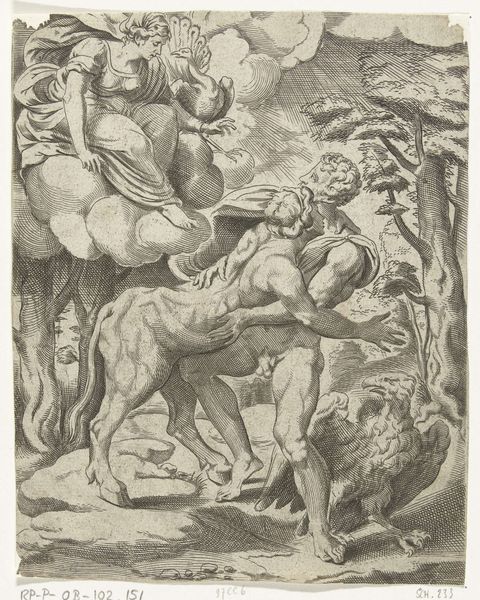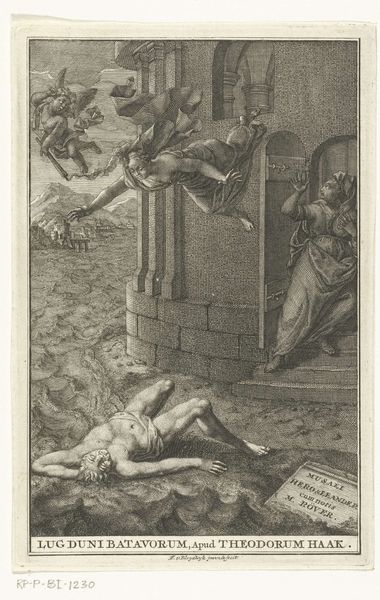
Paradise Lost, from the Dance of Death 1651 - 1800
0:00
0:00
Dimensions: Sheet: 2 15/16 × 2 3/16 in. (7.5 × 5.5 cm)
Copyright: Public Domain
Editor: Here we have Wenceslaus Hollar's "Paradise Lost, from the Dance of Death," likely created between 1651 and 1800. It's an etching, a very detailed scene. Adam and Eve are being driven from Paradise, but the looming figure of Death playing a fiddle really grabs my attention. How do you interpret this work and its historical context? Curator: The power of this image, indeed, resides in understanding that historical context. Hollar situates the biblical narrative of the expulsion within the very real and ever-present societal anxieties about death, specifically thinking of the recurring plagues that ravaged Europe at the time. Death, often depicted allegorically as a skeletal figure, is not merely an end, but an active force – almost gleeful, as suggested by the fiddle, underscoring the inevitability and the constant presence of mortality in the lives of those who saw this image. Consider how the fleeing figures contrast with Death's seeming nonchalance: who truly controls the narrative here, and what power dynamics are at play? Editor: So, it's more than just a religious illustration; it's a commentary on the anxieties of the era? The contrast you pointed out makes me think about power structures as well... Curator: Precisely. It's crucial to acknowledge that "Dance of Death" as a genre emerged in times of social upheaval, ecological catastrophe, political turmoil and devastating disease – think the Black Death – providing a visual language to grapple with collective trauma and perhaps reflect on social inequities. The prints themselves become accessible means of questioning power. How do you see the angel functioning within these social dynamics in this print? Editor: I hadn't considered that, the angel looks less like a comforting presence and more like an enforcer here. The way the scene captures the intersection of religious beliefs, social fears, and artistic expression is amazing. I appreciate your view on the artwork! Curator: And I, yours. This exchange demonstrates how an interdisciplinary approach, rooted in historical and social awareness, unveils profound depths within a single artwork, and the urgent need for cultural memory and social justice to engage art responsibly and meaningfully.
Comments
No comments
Be the first to comment and join the conversation on the ultimate creative platform.


